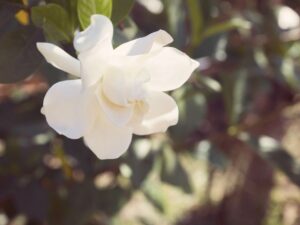How to Grow and Care for Magnolias

Magnolias have one of the most striking and beautiful blooms of any flower. The bold colours of the flowers – whether they are pink, purple, white or yellow – absolutely pop when set against the muted green foliage and bare branches of the Magnolia Tree.
Magnolia Trees
These gorgeous and delicate blooms smell incredible, with strong hints of lemon that calm the mind. There are over 200+ different Magnolias in the Magnoliaceae family, with many widely available for cultivation in gardens.
These ancient trees have been around for a stunning 95 million years, so they’ve had plenty of time to evolve in a myriad of different ways. Many scientists think it was the first flowering plant! This could be why the upright flowers look so unique compared to other blooms.
The Magnolia’s advanced age is part of the reason why you’ll find so many variations on colour, bloom and size. We have several different Magnolia Species for every type of garden available here at Diacos.
Let’s talk about how to grow and care for this beautiful plant, the Magnolia.
Magnolias are a low maintenance plant
Magnolia Trees are hardy plants with strong branches and large, waxy leaves. Some are deciduous and will bloom in Spring, while other species are evergreen and will continue to flower in Summer.
Magnolias have a tendency to struggle for the first couple of years of their lives and do very little, so it may take a while before you see solid growth. This fact has given them a slight reputation as a fussy plant, but it’s not really the case at all
In fact, the Magnolia is a very low-maintenance plant once it gets going, provided it’s been placed somewhere where its natural sunlight and soil nutrition needs are met.
Be patient with your Magnolia, and you’ll be rewarded with a persistent, easy-to-care-for plant that will offer a rewarding bloom year after year.
Planting your Magnolia
Magnolia Trees like a little bit of space, and they don’t like to be moved. Don’t plant anything beneath them or too close to them – including grass – or you may risk both plants suffering.
However, Magnolias do like a bit of shelter from harsh winds, as it can snap their branches or destroy the beautiful blooms. This can be provided by other trees and shrubs in your yard. Try to choose somewhere where your Magnolia is sheltered by these other plants, but not crowded in.
To plant your Magnolia, create a hole double the size of the pot and add fertiliser or manure, soil and a good quality potting mix. Water this mixture in well, then add a saucer-like depression around the base of the plant to direct the water to the roots.
Finally, add a thick (10cm) layer of mulch. Magnolias love mulch, so don’t be shy like you might be with other plants. You may need to re-mulch around once or twice a year, in Spring after the Magnolia begins to flower and again in Autumn if necessary.
Sunlight
Sunlight is the most important ingredient for your Magnolia to thrive. These plants love a few hours of full sun, though they’ll need a little bit more shelter on hot Australian summer afternoons. A northern or easterly facing aspect with some shelter is likely the way to go.
Not sure you can manage this in your yard? That’s okay! Magnolia plants have been known to still do well in Partial Sun and Shade conditions. In these conditions, you may see slightly slower growth over time. However, you’ll be at less risk of your Magnolia overcooking in the summer heat.
Watering
Magnolias need a lot of water in the first few years of their lives. You’ll find yourself needing to water this plant around twice a week, but slightly less in late autumn and winter.
Be sure to aim your hose or watering can at the base of the tree and water as deeply as you can for the first few years of its life. Your goal is to try and encourage deeper, stronger root growth to help the tree last a long time. Young Magnolias that only receive surface-level watering are at risk of growing shallow, weak root systems that make the tree prone to falling over.
Once Magnolias have established some deeper roots, they will be able to hold more moisture and tolerate short dry spells or droughts. Once your Magnolia tree is mature, you will only need to water it around twice a month. At this stage, they are hardy, easy to look after and hard to kill.
They’ll need extra watering to get through summer, however, as the hot weather can make them very thirsty! As with any plant, keep an eye on the leaves to see how your Magnolia is doing. You can check out our Guide to Watering Your Plants for more step-by-step instructions on managing the water needs of your garden.
Soil & Drainage
Magnolia love fertile, rich soil with good drainage. They will get by in most average garden soils. In fact, they’ll even adapt to loam, clay and sand provided there’s drainage, but nutrient-rich soil is always best.
Drainage is probably the most important thing here. As your Magnolia needs so much watering in the first few years, it’s essential that the water has somewhere to escape to, as waterlogged or permanently wet soil will cause your tree to suffer. If you are keeping a Dwarf Magnolia in a pot, be sure to place the pot somewhere where it can drain freely, like concrete or pavers.
Finally, Magnolias prefer slightly acidic soil, usually around 5-6ph. An Acid-Neutral or Alkaline soil may suffice, provided that you supplement it with plenty of broken-down compost (often called ‘Humus’).
Pruning
We’d urge a bit of caution when it comes to pruning your Magnolia. Pruning in general isn’t necessary for these trees unless you are removing wind-damaged branches or aiming to encourage some vertical growth, rather than foliage and flowers.
If you do prune your Magnolia, prune straight after flowering and be careful not to damage it. Magnolias are resilient in almost every way, but they don’t recover well from pruning damage at all.
Never prune below the raised ridge at the base of larger branches, or it will prevent further growth and flowering in the future. This is one of the most important things to remember when caring for your Magnolia tree.
Propagation
If you would like to propagate your plant to share it with friends, good on you! Gardens are made to be shared and grown. But you will have better luck propagating Magnolia from a cutting, rather than a seed.
Seedling Magnolias may take a decade or more to flower, whereas a cutting should flower in around two years after it is rooted. To propagate your cutting, take around 20cm off of the end of a growing branch and remove all of the leaves except those at the very end.
Make a small cut (around 5cm) in the base of the stem, cover generously with Rooting Hormone and plant it in a container with fast-draining soil like sand, peat or perlite. Keep this in indirect indoor light and mist regularly, as much as once a day. You can try wrapping it in plastic to help trap moisture – hydration is what your Magnolia cutting needs the most.
Don’t be deflated if it doesn’t work – Magnolia cuttings are known to fail fairly regularly. But if you keep it moist and keep an eye on it, there should be enough root growth after about 2 months to plant your Magnolia.
Can I keep a Magnolia indoors?
The short answer is no, unfortunately. As we mentioned earlier, Magnolias love full sunlight, and so most species of Magnolia will not make it as an indoor plant. There are many different magnolia species, but most are shrubs or big hardy trees that need an outdoor environment.
The exception is the Little Gem or ‘Dwarf’ Magnolia, which has been known to do quite well in the partial sun/shade of an indoor environment. You can find the Little Gem in the Diacos Store, and our friendly staff will be happy to answer any questions you may have about it.
If you don’t have any outdoor space but you’re dead set on a Magnolia (and who could blame you!) then we definitely recommend going for the Little Gem or another ‘Dwarf’ variety that won’t need as much care or space as a full-sized Magnolia Tree.
Otherwise, the love of full sun, water and space means that Magnolia is very much an outdoor plant.
This has been our guide to growing and caring for the beautiful Magnolia Tree. Magnolias are one of the most rewarding flowers you can grow, with bold colours and a lovely scent.
Getting your Magnolia started can require a little bit of trial and error and a lot of care, but once it starts to grow, you will be blessed with a sturdy and pleasantly low-maintenance plant for years to come.
Our knowledgeable gardening experts are happy to answer any more in-depth questions you may have about your Magnolia. Don’t be afraid to drop us a line today – we’re always happy to help with any garden queries at Diacos.
-
 7, Mar, 2025
7, Mar, 202510 Plants That Boost Office Wellbeing and Productivity
Modern offices can feel removed from the natural world. You... -
 20, Feb, 2025
20, Feb, 2025Avoid These 5 Gardenia Growing Mistakes for Stunning Blooms
Gardenias are loved for their sweet fragrance and stunning white... -
 23, Jan, 2025
23, Jan, 2025Creating Harmony: Ideal Companion Plants for Your Gardenias
Gardenias are some of the most beloved plants in Australian...


